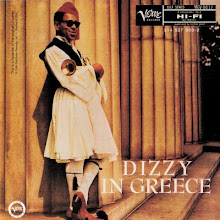
Hugely talented pianist Kenny Drew performed and recorded during the 1950s with Lester Young, Coleman Hawkins, Miles Davis, Charlie Parker, John Coltrane, Sonny Rollins, Johnny Griffin, Art Blakey and Charlie Mingus before moving to Europe in 1961. In 1964 he settled down in Copenhagen as the house pianist of the famous jazz club called Jazzhus Montmartre. Hugely talented bassist Niels-Henning Ørsted Pedersen was still in his twenties when he recorded this classic album with Drew in 1973, but he was already considered to be the best bassist in Europe. He had become the house bassist at Jazzhus Montmartre in 1964, and had been playing with Drew in that context for almost a decade before the two went into the studio.
The eclectic program consists of Danish traditional melodies ("Once A Saturday Night," "In The Stil Of The Woods"), original compositions by the two, Antonio Carlos Jobim's "Wave" in which Drew plays both acoustic and electric piano. Guitarist Ole Molin joins the duo on "Do You Know What It Means To Miss New Orleans." This is a must-own item for fans of Drew and Pedersen. Recorded in Copenhagen on April 2, 1973. Originally released by SteepleChase Records in 1973 on LP and 1988 on CD . This reissue CD -- special limited paper sleeve edition -- released in Japan by Videoarts Music on March 19, 2008. ”
Track Listing
1. In The Still Of The Woods [take 2]
2. Come Summer
3. Lullaby
4. Kristine
5. Serenity
6. Once A Saturday Night
7. Do You Know What It Means To Miss New Orleans
8. Wave
9. Duo Trip
10. Hush-A-Bye
11. In The Still Of The Woods [take 1]
Personnel
Kenny Drew (electric piano,piano)
Niels-Henning Ørsted Pedersen (bass)
Ole Molin (guitar)
This CD is part of SteeplaChase's Limited Edition Series available only in Japan. This series consists of only 10 choice CDs from the extensive SteepleChase catalog, are meticulously produced and sonically on a par with JVC's XRCDs.



